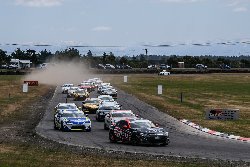A distress beacon could save your life this Labour Weekend
25 October 2019
Maritime NZ’s Rescue Coordination Centre NZ (RCCNZ) is reminding trampers, hunters, climbers and boaties to take a distress beacon when heading out this Labour Day weekend.
RCCNZ Manager Mike Hill is also asking people to make sure they register them. An unregistered beacon will still activate and give its position, but rescuers won’t know what they are responding to.
“Is it one person or a group? What were their plans? How experienced are they? Are there children? What equipment do they have? Do they have any medical conditions?
“All that information can be crucially important to emergency services,” Mr Hill said.
“That is why registration includes an emergency contact.”
He said, if you feel you are in “distress” (if you feel that your life is threatened or in grave or imminent danger), you should first try to use two-way communications such as a phone or radio so you can talk to emergency services. If this is unavailable or out of range, then activate your distress beacon.
“When to make that call or activate your beacon is a personal decision, quite different for everybody,” he said.
If you are heading out into the bush or mountains or
onto the water, always:
• plan your trip
• tell
people where you are going
• check the weather
forecasts
• have the right equipment and enough food
for what you are doing
• have ways to call for
help.
Check out the AdventureSmart website, which has useful advice for those heading out on the land, water or snow www.adventuresmart.nz
Mr Hill also acknowledged the efforts of the 95 percent of New Zealand’s search and rescue responders who are volunteers.
“We’d like to thank these wonderful volunteers who work to save lives and hope their assistance won’t be needed this long weekend.”
About
beacons
• See www.beacons.org.nz for information about
where you can buy or rent distress beacons, and to fill out
the registration form.
• Register beacons with RCCNZ.
This is a FREE service; it is also a legal requirement. Keep
your registration details up to date. If you need help with
registration, phone 0508 406 111 or email 406registry@maritimenz.govt.nz
•
Understand how to use the beacon before you go out. Check
the battery expiry date.
• Use a beacon that’s fit
for purpose:
• A PLB (personal locator beacon) on land. If being used for paddling or small water craft then they need to be of a type that can float and operate in water.
• o EPIRBs (emergency position-indicating radio beacon) are designed for boats, ships and other activities on water.
• We recommend that you carry your PLB
distress beacon on your person at all times, so you can
access it if an incident happens.
About search and
rescue
New Zealand has one of the biggest search and rescue regions in the world, 30 million square kilometres from the South Pole almost to the Equator.
Approximately 12,686 people are directly involved in the New Zealand search and rescue sector with a further 400 working to support them. People from all over New Zealand and all walks of life are involved as volunteers.
RCCNZ is New
Zealand’s 24/7 search and rescue operations centre. It
coordinates all major maritime and aviation search and
rescue missions within our region, and all land-based
missions arising from someone activating a distress beacon.
It will also be involved in other search and rescue missions
when a national operations room is needed.
ends


 Toyota New Zealand: Three Races For Top Three To Decide TR86 Title
Toyota New Zealand: Three Races For Top Three To Decide TR86 Title Wellington City Council: Wellington Is All Action Stations For The Faultline Ultra Festival
Wellington City Council: Wellington Is All Action Stations For The Faultline Ultra Festival Melanie Allison: Local Playwright Casts A Spell Over Hamilton
Melanie Allison: Local Playwright Casts A Spell Over Hamilton Te Kohao Health: New $12M Wellness & Diagnostic Centre Opens In Hamilton ‘Disrupting The Historic Continuum’ For Māori
Te Kohao Health: New $12M Wellness & Diagnostic Centre Opens In Hamilton ‘Disrupting The Historic Continuum’ For Māori Vegetables NZ: Fresh NZ-grown Vegetables Now Even Better Value For Cash Strapped Kiwis
Vegetables NZ: Fresh NZ-grown Vegetables Now Even Better Value For Cash Strapped Kiwis AgriFutures: Supporting The Next Generation To Succeed In Agriculture And Horticulture
AgriFutures: Supporting The Next Generation To Succeed In Agriculture And Horticulture